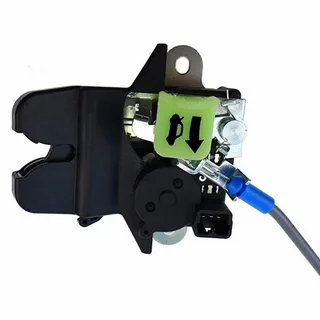Carpets are an essential part of any home or office, adding warmth, comfort, and aesthetic appeal to the space. However, over time, carpets can accumulate dirt, dust, allergens, and stains, making them look dull and potentially harming indoor air quality. Regular carpet cleaning is crucial to maintain their appearance, extend their lifespan, and ensure a healthy living environment. In this comprehensive guide, we’ll explore everything you need to know about Carpet Cleaning including methods, tips, and the benefits of keeping your carpets clean.
Why Is Carpet Cleaning Important?
Carpets act as filters, trapping dust, dirt, and allergens that settle on their fibers. Without regular cleaning, these particles can build up, leading to several issues:
- Health Concerns: Dirty carpets can harbor allergens, bacteria, and mold, which can trigger allergies, asthma, and other respiratory problems.
- Unpleasant Odors: Accumulated dirt and spills can cause carpets to emit unpleasant smells.
- Reduced Lifespan: Dirt and debris can wear down carpet fibers, causing them to deteriorate faster.
- Aesthetic Decline: Stains and dirt make carpets look old and unkempt, diminishing the overall appeal of your space.
Regular carpet cleaning not only addresses these issues but also helps maintain a fresh and inviting atmosphere.
Types of Carpet Cleaning Methods
There are several carpet cleaning methods available, each suited to different types of carpets and levels of soiling. Here are the most common techniques:
1. Steam Cleaning (Hot Water Extraction)
Steam cleaning is one of the most effective methods for deep cleaning carpets. It involves injecting hot water and cleaning solution into the carpet fibers, then extracting the water along with dirt and debris. This method is ideal for removing stubborn stains and allergens.
Pros:
- Deep cleans and sanitizes carpets.
- Effective for heavily soiled carpets.
Cons:
- Longer drying time (6–12 hours).
- Requires professional equipment for best results.
2. Dry Cleaning
Dry cleaning uses specialized machines and cleaning compounds to clean carpets without water. The cleaning powder or foam is applied to the carpet, agitated, and then vacuumed up, along with the dirt.
Pros:
- Quick drying time (1–2 hours).
- Suitable for delicate carpets that cannot handle moisture.
Cons:
- May not be as effective for deep stains.
- Requires professional expertise.
3. Shampooing
Carpet shampooing involves applying a foamy cleaning solution to the carpet, scrubbing it with a machine, and then vacuuming the residue. This method is effective for removing dirt and stains but can leave behind a sticky residue if not rinsed properly.
Pros:
- Effective for heavily soiled carpets.
- Affordable and widely available.
Cons:
- Can leave residue if not done correctly.
- Longer drying time compared to dry cleaning.
4. Bonnet Cleaning
Bonnet cleaning is a surface-level cleaning method that uses a rotary machine with a cleaning pad soaked in a cleaning solution. It’s often used in commercial settings for quick maintenance.
Pros:
- Quick and convenient.
- Ideal for light cleaning and maintenance.
Cons:
- Does not deep clean carpets.
- Can spread dirt if the pad is not changed frequently.
5. DIY Carpet Cleaning
For minor cleaning needs, you can use DIY methods such as vacuuming, spot cleaning with homemade solutions, or renting a carpet cleaner.
Pros:
- Cost-effective.
- Convenient for small areas or quick touch-ups.
Cons:
- May not be as effective as professional cleaning.
- Risk of over-wetting or damaging carpets.
Tips for Effective Carpet Cleaning
- Vacuum Regularly: Vacuum your carpets at least once a week to remove surface dirt and prevent it from settling deep into the fibers.
- Address Spills Immediately: Blot spills with a clean cloth and use a mild cleaning solution to prevent stains from setting.
- Use the Right Cleaning Products: Always use cleaning products that are suitable for your carpet type to avoid damage.
- Test Cleaning Solutions: Before applying any cleaning solution, test it on a small, inconspicuous area to ensure it doesn’t cause discoloration.
- Hire Professionals: For deep cleaning, consider hiring professional carpet cleaners who have the expertise and equipment to deliver the best results.
Benefits of Regular Carpet Cleaning
- Improved Indoor Air Quality: Clean carpets reduce the amount of dust and allergens in the air, promoting a healthier environment.
- Enhanced Appearance: Regular cleaning keeps your carpets looking fresh and vibrant.
- Extended Carpet Lifespan: Removing dirt and debris prevents wear and tear, helping your carpets last longer.
- Elimination of Odors: Cleaning removes trapped odors, leaving your space smelling fresh.
- Stain Prevention: Regular maintenance helps prevent stains from becoming permanent.
Conclusion
Carpet cleaning is more than just a cosmetic necessity—it’s an essential part of maintaining a clean, healthy, and comfortable living or working environment. Whether you choose to clean your carpets yourself or hire professionals, regular maintenance will ensure they remain in top condition for years to come. By understanding the different cleaning methods and following best practices, you can keep your carpets looking and feeling their best while reaping the numerous benefits of a clean and well-maintained space.




